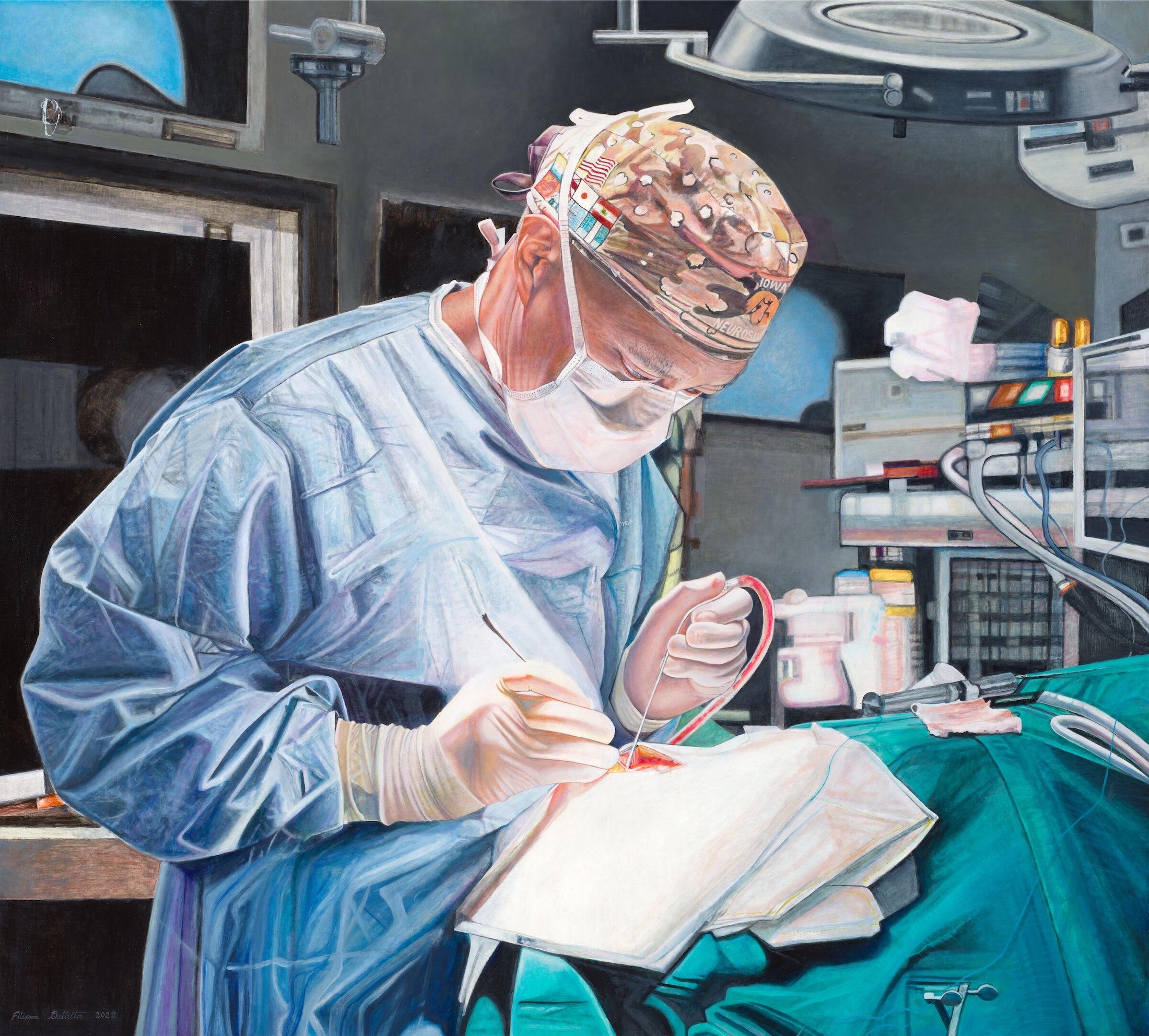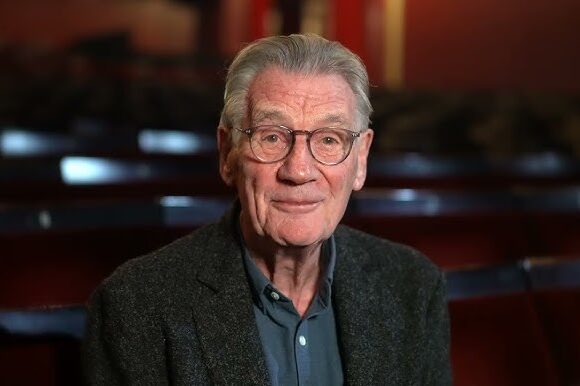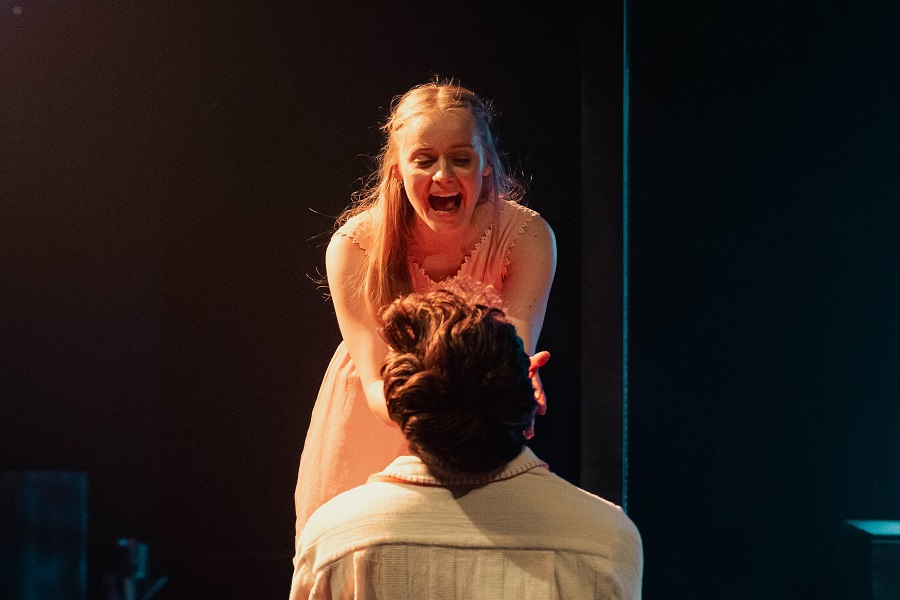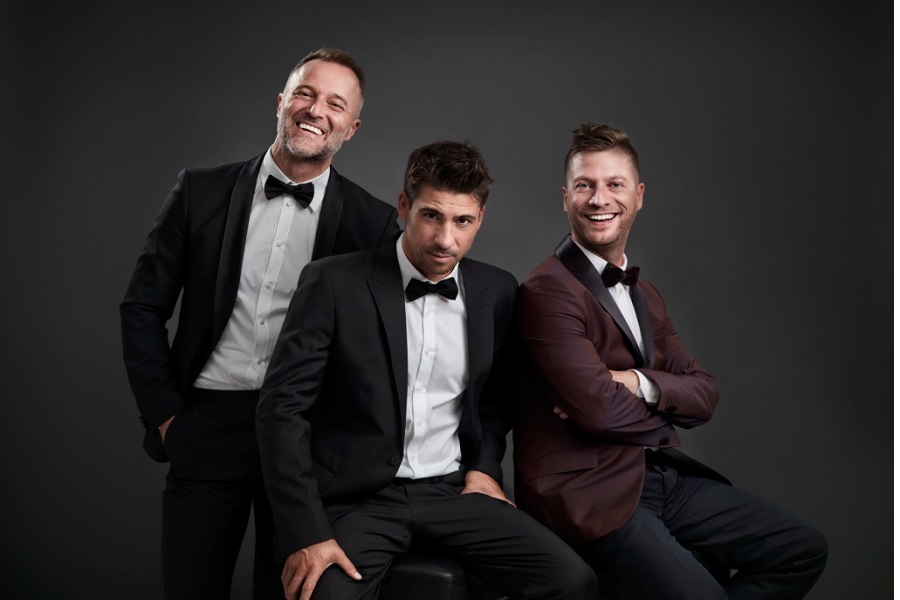
Art / “Darling Portrait Prize”, National Portrait Gallery, until October 9. Reviewed by ROB KENNEDY.
PAINTED portraits capture not just the image, but also the essence of a person.
More than a visual representation, portraiture tells a story. It renders an account of us and reflects who we are. In the 2022 Darling Portrait Prize, there are 39 unique stories, but with one prevailing theme.
If you paint a portrait of a human, you will have them doing and being everything from a mystical creature, a caricature to just themselves. Robert Hannaford has been painting himself for many years. And most of his self portraits get selected for one art prize or another.
In his “Self Portrait”, we see him in his studio, in winter, with brush in hand, looking like it has been a long, cold hard season. He dramatically stares at the viewer as if to say: “This isn’t easy”.
The highly commended work, “Shadow Crown”, by Nicholas Hopwood is a stunning piece on every level. Like the Hannaford painting that hangs next to it, both artists have their characters leaning to the left, which is probably why they were next to one another. But Hopwood’s work portrays a stunning semi-gothic creature doing and being something strange. The painting is of the artist’s daughter, Josephine, who is holding a white toy rabbit.
The way Hopwood has painted his daughter with her long hair partly obscuring her face with an expression that can’t be described, feels surreal and almost threatening, not unlike the times we are living through.
The artist Filippa Buttitta died this year from a brain tumour. In her early 50s, this was a massive loss for her family and the arts community. As an Archibald Prize finalist, Buttitta’s works were gaining the wider appreciation that they deserve. In this portrait, Buttitta has painted herself during a brain operation, performed by the renowned Australian neurosurgeon Dr Charlie Teo.
In this work titled “Dr Charlie Teo Operating on my Brain”, we cannot see the artist at all. But it’s clear to see the amazing artist we have lost.
There are quite a number of works relating to the pandemic. The winning work simply titled, “2020”, by Jaq Grantford, highlights issues of insecurity and vulnerability that have affected most people in the world during this time.
With her hands around her mouth and nose, Grantford shows us she is covered by insecurity and loss. But as a painter, she has something that most of us don’t, an escape route into her studio. Shortly after finishing the self portrait, the artist was diagnosed with cancer.
Perhaps the most outstanding work is by the realist artist based in Canberra, Narelle Zeller. Her painting titled, “Ngambri Woman”, depicts elder Aunty Matilda House-Williams sitting and enclosed by a large possum skin.
Portraying her subject with eyes shut, Zeller has perfectly captured the sitter by artistically representing all of Aunty Matilda’s tireless resilience and contribution to her community and culture. The quality of the work is outstanding.
The many faces in this portrait prize seem to be searching, wistful and wondering. Most seem to say, “What’s happening?” “What’s going to happen?”. All have beautifully caught the essence of these uncertain times.
Who can be trusted?
In a world of spin and confusion, there’s never been a more important time to support independent journalism in Canberra.
If you trust our work online and want to enforce the power of independent voices, I invite you to make a small contribution.
Every dollar of support is invested back into our journalism to help keep citynews.com.au strong and free.
Thank you,
Ian Meikle, editor







![Evie Hudson is a woman with amnesia, who forgets the last 13 years. Piecing her life back together, she navigates the harsh realities of coercive control.
Evie is the leading character in local author @emmagreyauthor's second novel Pictures of You.
Her debut book, The Last Love Note, sold more than 100,000 books worldwide within a few months of being published last year.
“I think that using amnesia really helped [show the effects of coercive control] because she had that sense of being completely lost in her own life,” Emma says of her new work of fiction.
To read the full story and find out more about this fabulous local author and her latest novel, visit our website at citynews.com.au or click the link in our bio! 📚✒️
#canberra #local #canberralocals #canberralife #australia #author #localauthor #Picturesofyou #coercivecontrolisabuse #dvawareness #bestsellingauthor #canberraauthor #localnews #citynews](https://citynews.com.au/wp-content/plugins/instagram-feed/img/placeholder.png)
Leave a Reply